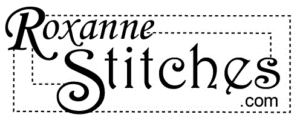Here’s another decorative stitching foot that I’ve had for a little while and have yet to try. It’s called the Fringe Foot and it’s a specialty foot that’s been around and has recently been bundled by Singer with some of their new sewing machines. It’s not expensive at $9.95 and doesn’t require a special shank like some of the other specialty feet I’ve reviewed. It’s made to work on low shank machines. If you’re interested in purchasing this foot, it’s available through Internet Sales USA, Fringe Foot.
Notice in the center of the foot there is a raised metal piece that looks like an upside down ice skate. Don’t worry, it’s not sharp. It just “looks” like an ice skate. This center bar is what the thread stitches over to create the fringe which is really just large loops. The wider the zigzag or ladder stitch used, the longer the fringe loops will become. I set this foot up on my Singer Quantum L-500 to do the testing.
 |
| Notice the needle and see how it will stitch over the raised bar to create the fringe. |
 |
| Notice the raised bar in the center of the foot. |
This foot gives an interesting look and for my samples I tried using a single thread in white and double threads in red to get a sense of how it would look. I did try this foot all the way from 4mm to 9mm and it worked just fine.
 |
| Started off on the left at 4mm and gradually increased the width of the stitch to the right. |
 |
| Continued from the left and increased the stitch length to 9mm. |
My thought was that by using 2 threads, I would get more loops and more coverage. One thing I didn’t like was that the loops that were created with this foot when using just the zigzag stitch were easy to get snagged. They seemed very uneven and loopy. I had to find a solution because I could imagine the potential of this embellishment and how pretty it could look. I ended up using a straight stitch to stitch down one side of the loops to secure them. This solved the snagging problem perfectly.
 |
| Used a 9mm zigzag stitch and shorted the stitch length to 1.5. |
 |
| Back of sample with fusible interfacing. |
 |
| Top sample~not stitched down. Bottom sample~stitched down |
The instructions say you can use the ladder stitch, which is #52 in section D on my machine. I bumped up the width of the stitch to 8mm since the default 7mm stitched a little to close to the foot and I didn’t want to hit the foot and break a needle or worse. This stitch created a ladder with loops in the center. The good thing about using this stitch is that it was secure on both side and didn’t pull out or snag. I also used this stitch to stitch over ribbon just to see the effect.
 |
| Ladder stitch |
 |
| Using the ladder stitch to stitch over ribbon. |
Please keep in mind after your finished stitching to lift the presser foot and pull the fabric toward the back of the machine. It’s important to pull the stitches off the raised bar as you pull the fabric out of the machine. Other than that little trick it’s an easy foot to use. Lots of potential for creating different looks by using different threads, stitch widths and lengths and even using it to stitch over other trims or ribbons. I think it’s another WINNER!!
Below I’ve included a copy of the instructions that came with the Fringe Foot. It states in the directions not to use this foot with a stitch large than 5mm, however I did. I experimented with stitch widths from 4mm to 9mm. They also mention on the instructions that one of the uses for this foot is to make pattern markings. I’m not exactly sure what that is?? I only used this foot for decorative purposes to create texture and embellishment.
Thanks for taking the time to read my latest foot review!!
P.S. My pattern fitting series, “My Approach to Successful Pattern Fitting” will be starting next week. If you haven’t read about it yet or signed up for the drawing please check it out here and here.















I think I know what Singer mean about using the foot for pattern marking. I can see that with this stitch you would be able to do thread tracing/tailor tacking, for example along a dart line. Sew along the stitching lines through two pattern pieces pinned together (for example left and right bodices) using as narrow as possible a zig-zag, then pull the two pieces gently apart and cut through the thread. Now you have two pieces with identical thread markings as in old-fashioned tailors tacks. This would only work on European-style patterns with no seam allowances and with the darts also cut as spaces. This would allow you to mark right along the edge of the pattern tissue without sewing through it. And of course just a few Satin stitches very close together would give you a single point tailors tack.
Hi Ann Frances! Thank you so much for that detailed explaination!! I never use tailor tacks, but this sounds like it may be useful for those that do. Any idea of how this foot could be used to do "heirloom" sewing as explained in the instructions? Thanks
There is a Bernina video on youtube for their fringe foot that shows using it for fagoting at 5.5 mm width and 1.5mm length — stitch on the seamline then pull apart. Then you can work with the threads as you like.
Thanks!! Sounds interesting!!